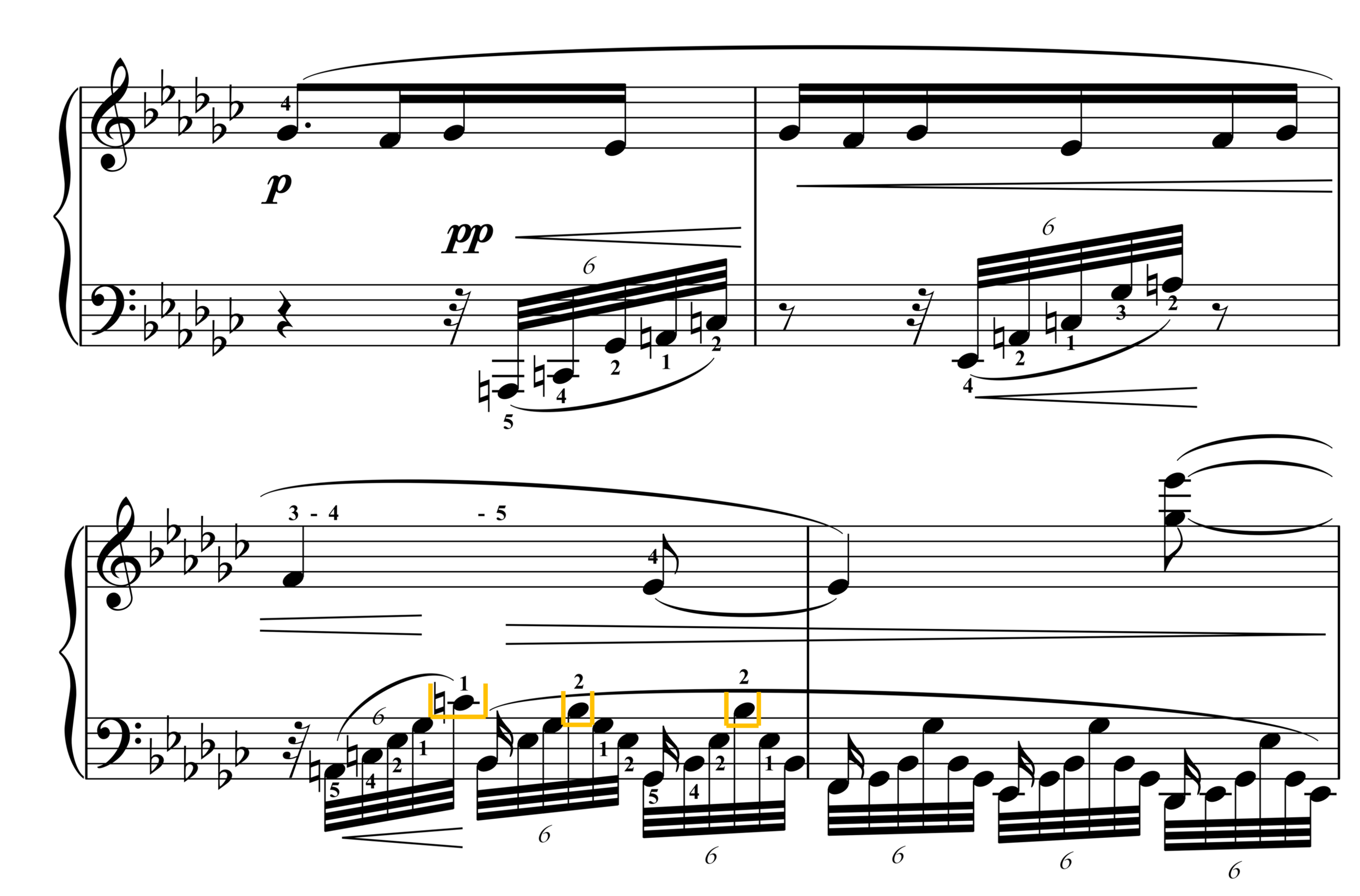“When possible, it’s nice to reduce the stretch in the left hand by grabbing the top note in the right.”
Submitted by Michael Clark
Published on 1/1/2020

“When possible, it’s nice to reduce the stretch in the left hand by grabbing the top note in the right.”
Submitted by Michael Clark
Published on 1/1/2020

“When possible, it’s nice to reduce the stretch in the left hand by grabbing the top note in the right.”
Submitted by Michael Clark
Published on 1/1/2020

“The top notes of this widely spaced accompaniment can be incorporated into the right hand.”
Submitted by Michael Clark with thanks to Jennifer Hayghe
Published on 1/1/2020

Submitted by John Kline with thanks to Vladimir Ashkenazy
Published on 2/29/2020

“Silently transferring the top note of the fifth into the left hand allows it to be held for its full duration.”
Submitted by Michael Clark
Published on 1/1/2020

“The left hand is already in a higher register. Why not help out the right hand?”
Submitted by Michael Clark
Published on 1/1/2020

“I find using two hands is more reliable and looks good.”
Submitted by Michael Clark
Published on 1/1/2020

“Repeat provided fingering patterns through the measure.”
Submitted by Kevin Lee Sun
Published on 1/28/2022

“Take these two note notes with left hand is a secure way to end the trill and make the leap.”
Submitted by Michael Clark
Published on 1/1/2020

“Taking the double-stemmed note in the left hand helps to voice it distinctly from the other notes in the arpeggio.”
Submitted by Michael Clark
Published on 1/1/2020

“Dividing the theme between the hands in this way facilitates the sharp accents Copland desires.”
Submitted by Michael Clark
Published on 1/1/2020

“Switching the E to the right hand eliminates a stretched position in the left hand. More compact positions allow a more forceful delivery.”
Submitted by Michael Clark
Published on 1/1/2020

“Taking the A in the left hand helps the right hand hold the tied notes without stretching.”
Submitted by Michael Clark
Published on 1/1/2020

“I prefer to take the A with the left hand, though in the follow measure I play the B and D with the right hand.”
Submitted by Michael Clark
Published on 1/1/2020

“When the top staff has rests, I split the notes on the lower staff between the hands.”
Submitted by Michael Clark
Published on 1/1/2020

“Taking the C-sharps in the right hand eliminates a stretch in the left hand. More compact positions allow a more forceful delivery.”
Submitted by Michael Clark
Published on 1/1/2020

“Taking the C-sharp in the left hand reduces the stretch from a tenth to an augmented octave.”
Submitted by Michael Clark
Published on 1/1/2020

“This fingering maximizes power by playing the low C-sharp with the thumb. This creates a leap to the remainder of the final LH chord which is facilitated by the RH taking the LH chord’s top C-sharp.”
Submitted by Michael Clark
Published on 1/1/2020